Our visit to an abandoned water park near Hue
Have you ever done your research and thought you had ‘discovered’ somewhere that you hoped nobody else knew about? That was us before we arrived in the central Vietnamese city of Hue.
Ho Thuy Tien Water Park is an abandoned water-based theme park near Thien An Hill on the outskirts of the city. We found out about it via Atlas Obscura, one of our go-to websites we visit regularly in order to get inspiration and find some out-of-the-ordinary places to visit. Atlas Obscure is a very popular website, with thousands, if not millions of regular visitors but, from our experience, we have often found that even though a location is featured on their website, when we actually get to it we are the only visitors around.
Perhaps we have been lucky, but we assumed this would be the case with Ho Thuy Tien Water Park. The park’s most striking feature is a fierce-looking, concrete dragon perched on top of what was once an aquarium. As per usual when we arrive in a new place, the first thing we did after checking into our hotel in Hue was to go out for a walk in the local vicinity to see what’s what. We were staying in the main traveller’s hub which is full of guesthouses, restaurants, bars and other services catering for tourists. There are also plenty of travel agents offering trips out into the surrounding countryside (Hue is renowned for its outlying tombs and pagodas) and it wasn’t long before we started noticing photos of the distinctive concrete dragon on posters advertising these tours. Bummer, we thought, the place is more well-known than we initially assumed. What’s more, at least one of the city’s main hostels (Hue Backpackers) was also offering daily motorbike tours that included a visit to the park and it didn’t take us long to figure out that we would probably not be alone when we planned to visit this abandoned theme park a few days later.
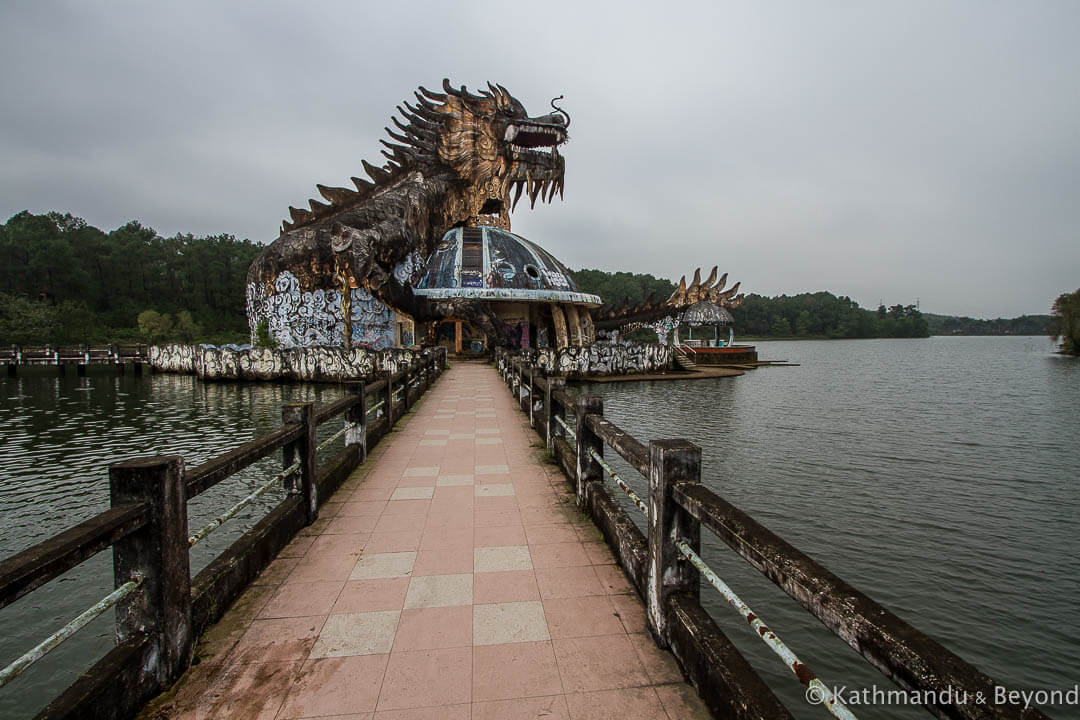
The aquarium, Ho Thuy Tien Water Park
Unless you are really hardcore about your urban exploration, don’t let the above put you off. The park, particularly the jungle-clad waterslides and the serpent-dominated aquarium, was very photogenic and fun to explore. The above is more a precautionary tale to prevent initial disappointment, which is what we felt when we found out Ho Thuy Tien Water Park was well and truly on the traveller’s trail.
During the time we were there, I would say we shared the park on and off with about a dozen western tourists and a handful of Vietnamese ones (*), which isn’t that much really compared to Hue’s other out-of-town attractions.
(*) We visited midweek and I suspect there would be more local visitors there at the weekend.
As well as being prepared for non-exclusivity of the grounds, expect to pay a nominal fee to the security guard at the main entrance (VND10,000 US$0.44 in January 2018) and another small sum of money to park your motorbike near the lake. There were also a few smiley vendors, again by the lake, selling cold drinks and snacks. Add the fact that the Vietnamese seem to go there for a bit of a picnic and as a respite from the city and you could almost be forgiven for thinking you were inside a regular tourist attraction rather than an abandoned theme park that has been completely given over to the elements and was technically off-limits.
There is no time restriction on how long you can stay inside the park so, if someone is getting in the way of that atmospheric shot you want then hang around for a bit and you are likely to have the section of the park you are in to yourself for at least the time it takes to take the shot before the next bunch of visitors come along.
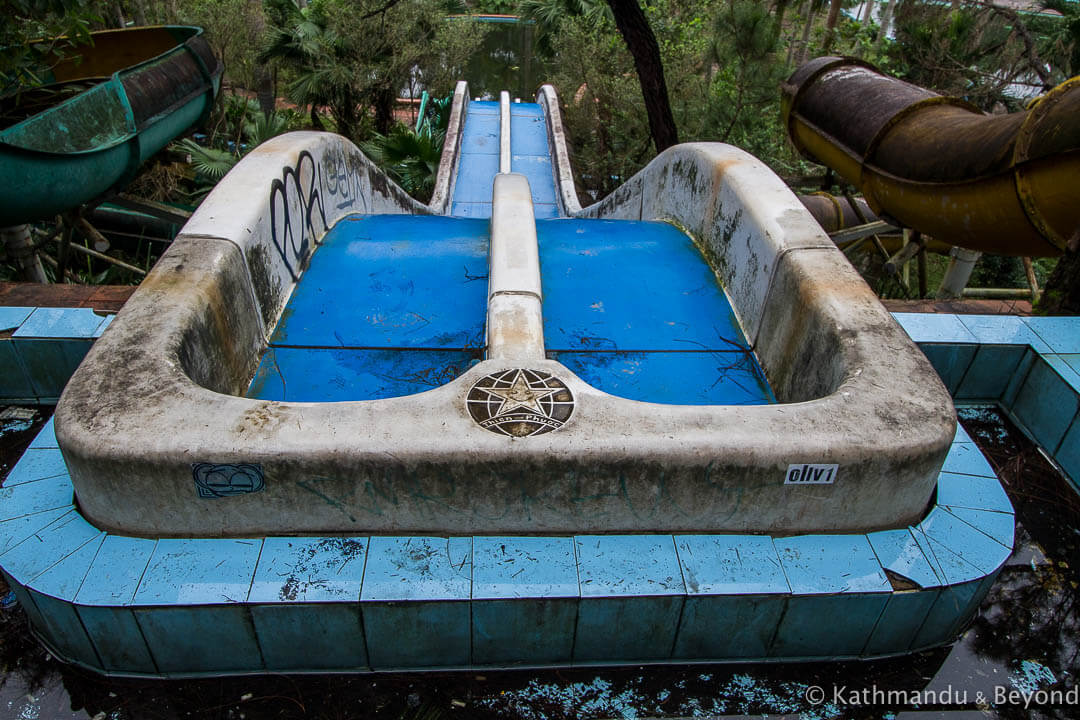
Waterslides, Ho Thuy Tien Water Park
It is said, predominantly by the staff at Hue Backpackers from what I can work out, that there is no guarantee that you will always be able to enter the park. The security guard was obviously there for a reason and there were rumours that if the owners of the land are expected on the site, the guard will not allow anyone in. We didn’t have any issues gaining entry and neither did any of the people we met in Hue who had also recently visited, but it’s probably worth asking the question the day before your intended visit. The staff at Hue Backpackers are always a good source of information on the subject.
As for the park itself, it was opened in 2004 and cost a reported US$3m to construct. It closed down just a couple of years later but the reasons for this are unclear. Whether it was down to operating issues or financial ones, nobody seems to know but, the park was only half to two-thirds complete when it opened to the public and this probably contributed to its demise.
There are three areas of the park worth exploring. The inside of the aquarium resembles a ribcage and it’s possible to climb via a stairway right up to the dragon’s mouth and look out over Thuy Tien Lake. Down in the belly of the beast is the remains of the aquarium proper. It’s now completely overgrown but you can still clearly see the remains of the tanks as well as the pumps and other aquarium-related paraphernalia.
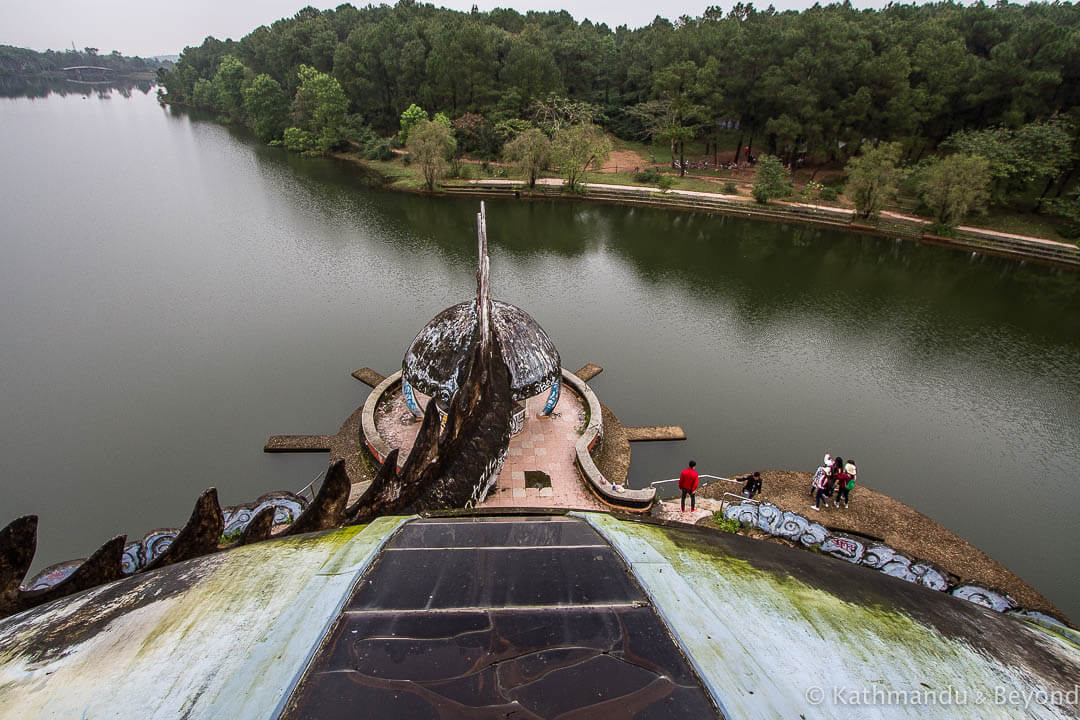
The aquarium, Ho Thuy Tien Water Park
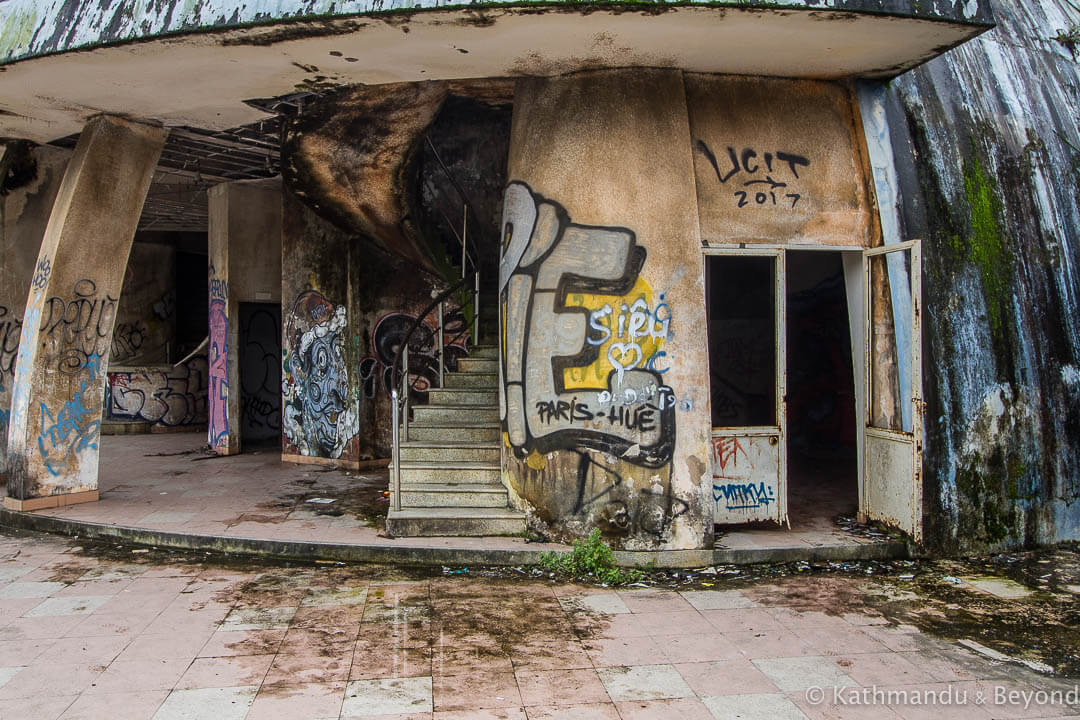
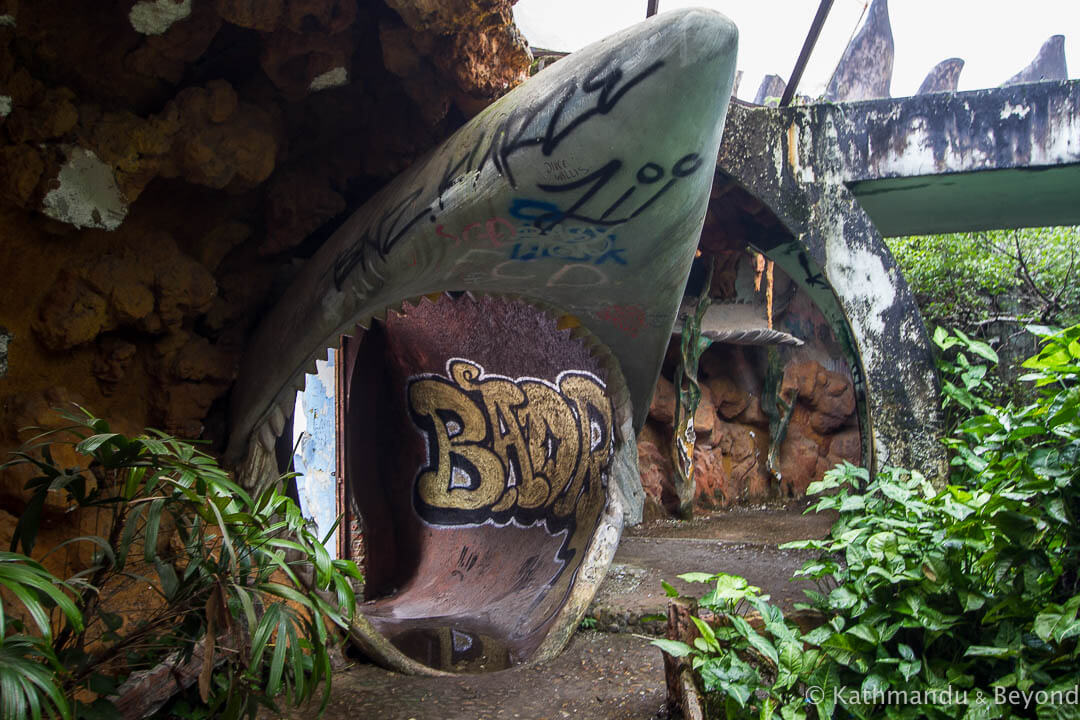
The aquarium, Ho Thuy Tien Water Park
A short distance from the aquarium is the park’s most atmospheric ruins; three waterslides that have been totally engulfed by nature. When the park closed in 2004, crocodiles were left to fend for themselves and made their home in the pools attached to the waterslides. Remarkably, as recently as February 2015, the crocodiles, who by now were in a dreadful state of ill health, were still residing in the pools. Some visitors even fed the crocodiles and also brought them to the attention of the animal welfare organisation, People for Ethical Treatment of Animals (PETA). In collaboration with the local authorities, PETA took the crocs out of the pools and moved them to a wildlife park somewhere else in the country.
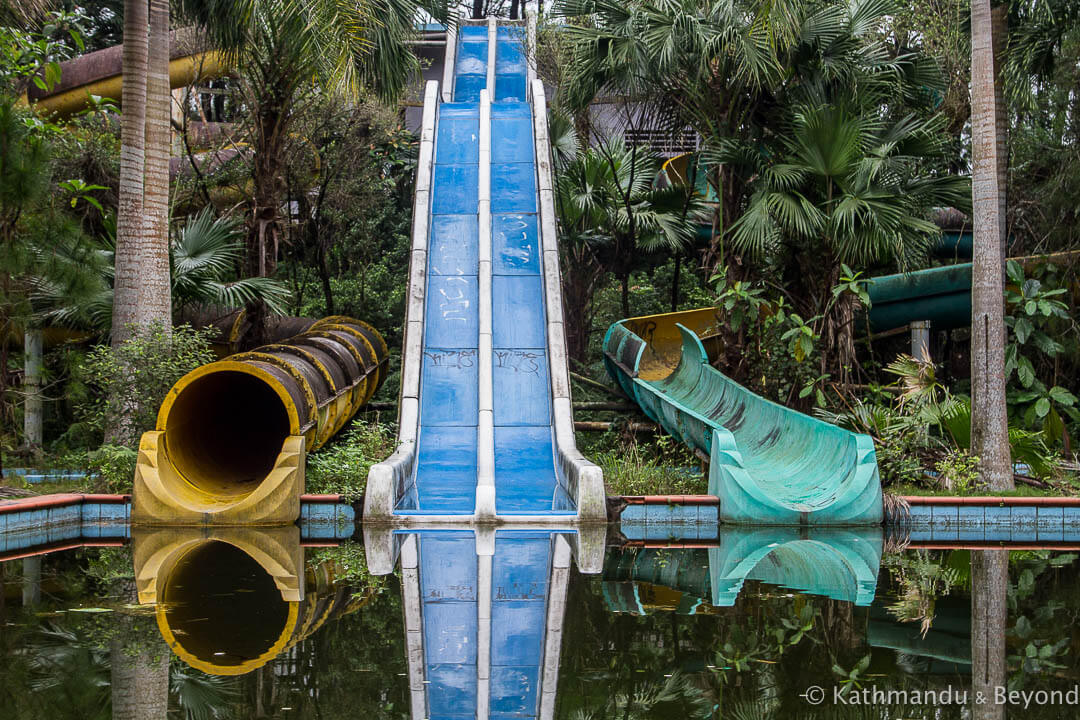
Waterslides, Ho Thuy Tien Water Park
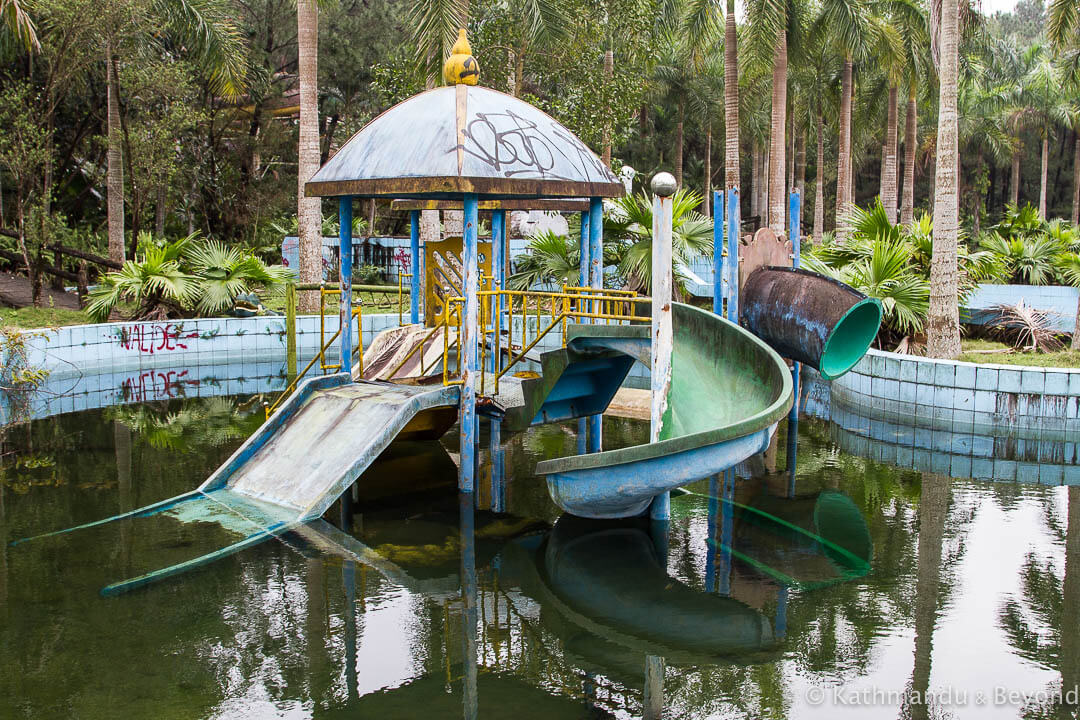
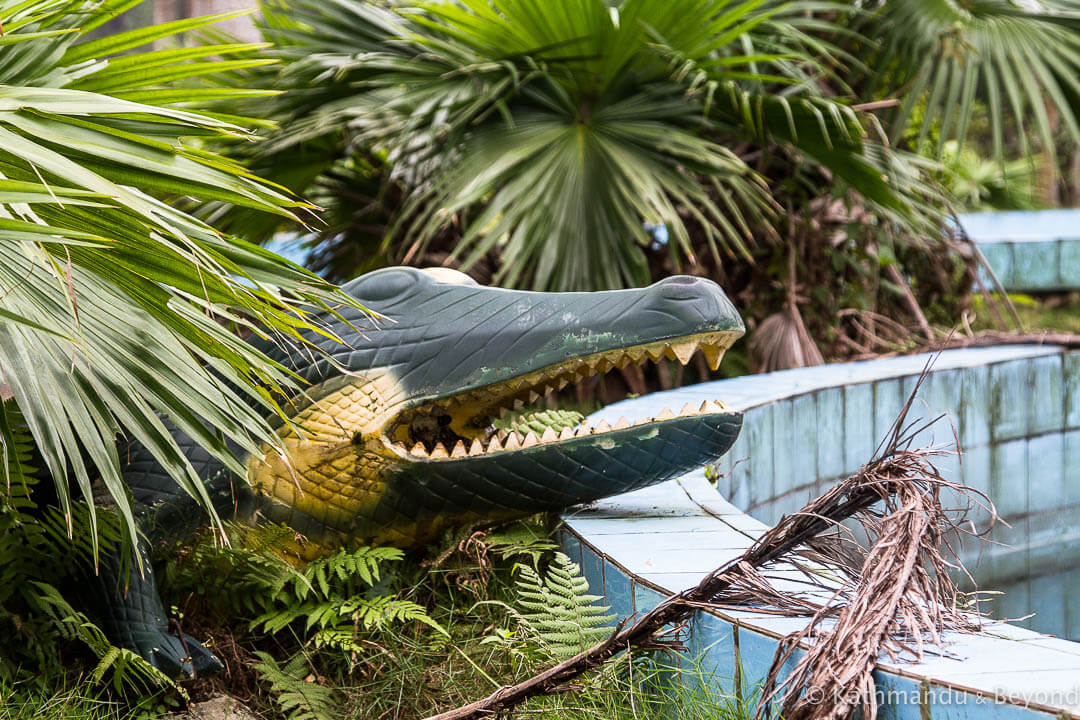
Ho Thuy Tien Water Park
The third and final part of the abandoned water park worth exploring is the auditorium, which is situated at the opposite end of the lake from the aquarium. Much of the auditorium was covered in graffiti and was in a pretty bad condition but the seats were still in place, as was the central platform, where presumably performances were put on to entertain eager spectators.
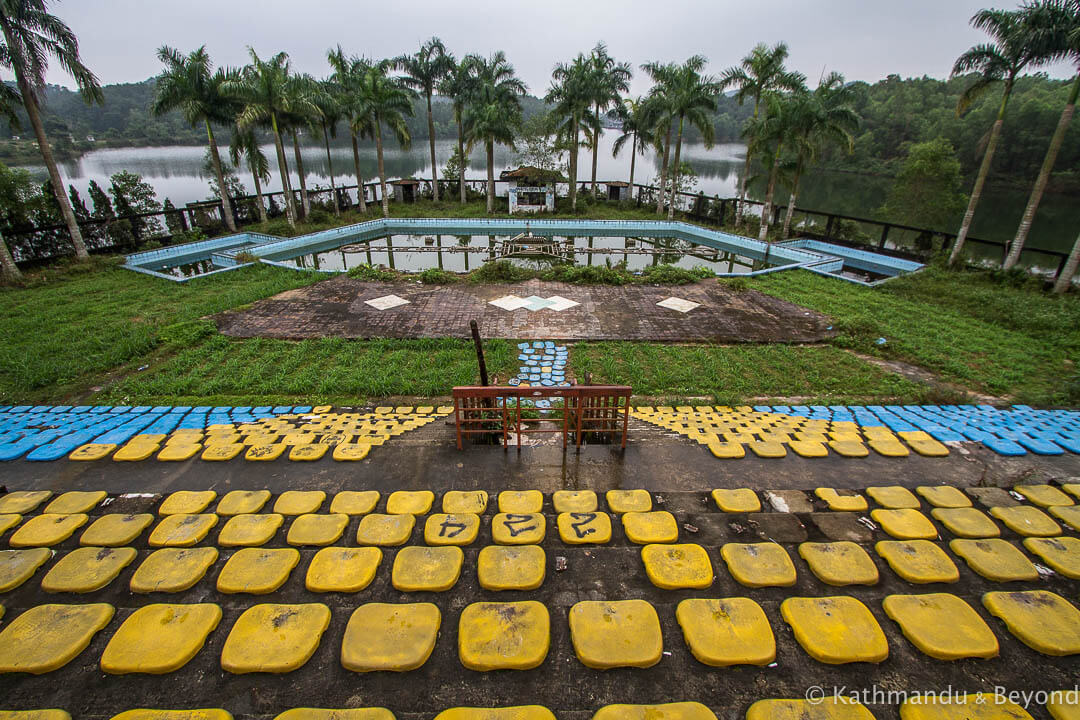
The auditorium, Ho Thuy Tien Water Park
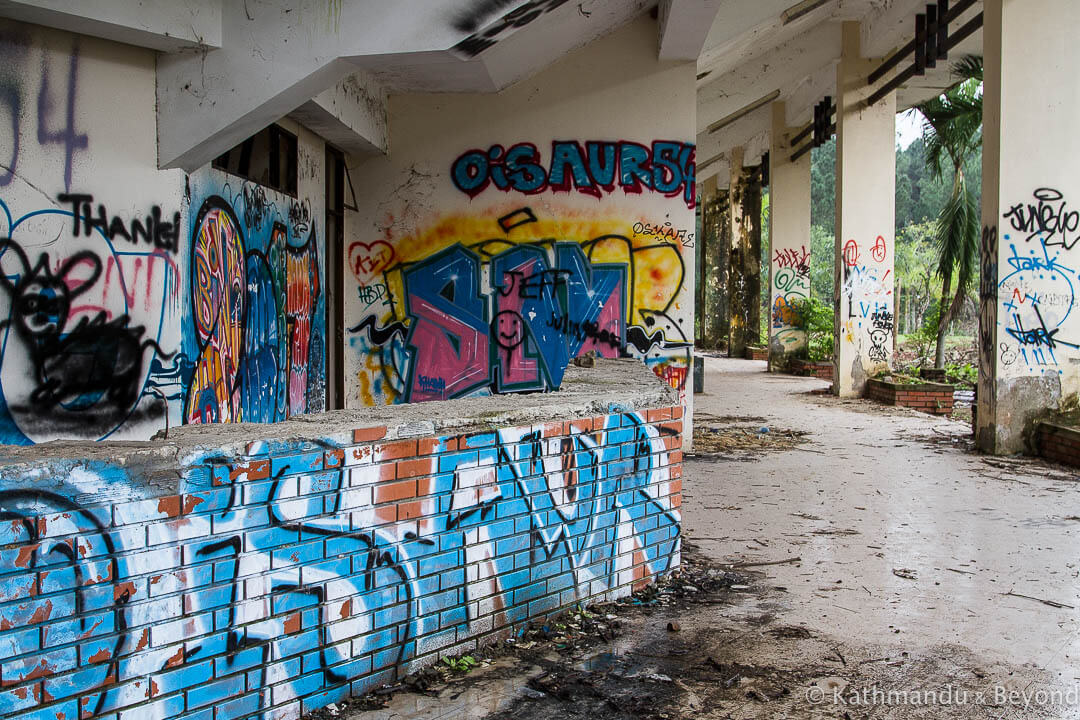
The auditorium, Ho Thuy Tien Water Park
And finally, there are several articles on the Internet about Ho Thuy Tien Water Park and, amusingly, many of them talk about the secrecy of the park and how its location is passed on from one traveller to the next, with one publication even making reference to scribbling down directions on scrunched-up napkins. What absolute piffle. All I can say is that whoever wrote these articles has been influenced too much by Alex Garland’s book, The Beach. As my comments above will testify, the park is not a legendary place that you will only get to hear about if the bloke in the room next to yours is a drug-crazed nut job called Daffy! Anyone can find it. It’s even listed as ‘Dragon Statue, Abandoned Waterpark’ on Google maps!
Getting to Ho Thuy Tien Water Park from the centre of Hue
The entrance to the park is 8km south of downtown Hue and is easily reached by motorbike, bicycle or taxi. Note, if you take a taxi, the security guard does not allow cars to enter the park so your driver will need to park up and you will have to walk the last kilometre or so to the lake and the other areas of interest. It’s no problem to take a motorbike or bicycle into the park.
We cycled out from the centre of Hue and overall the journey was OK, with about 50% of it spent on busy main roads, and the remainder on quiet rural ones. We had regular (i.e. pretty crappy!) pushbikes, which we hired for VND40,000 (US$1.75) each, per day.
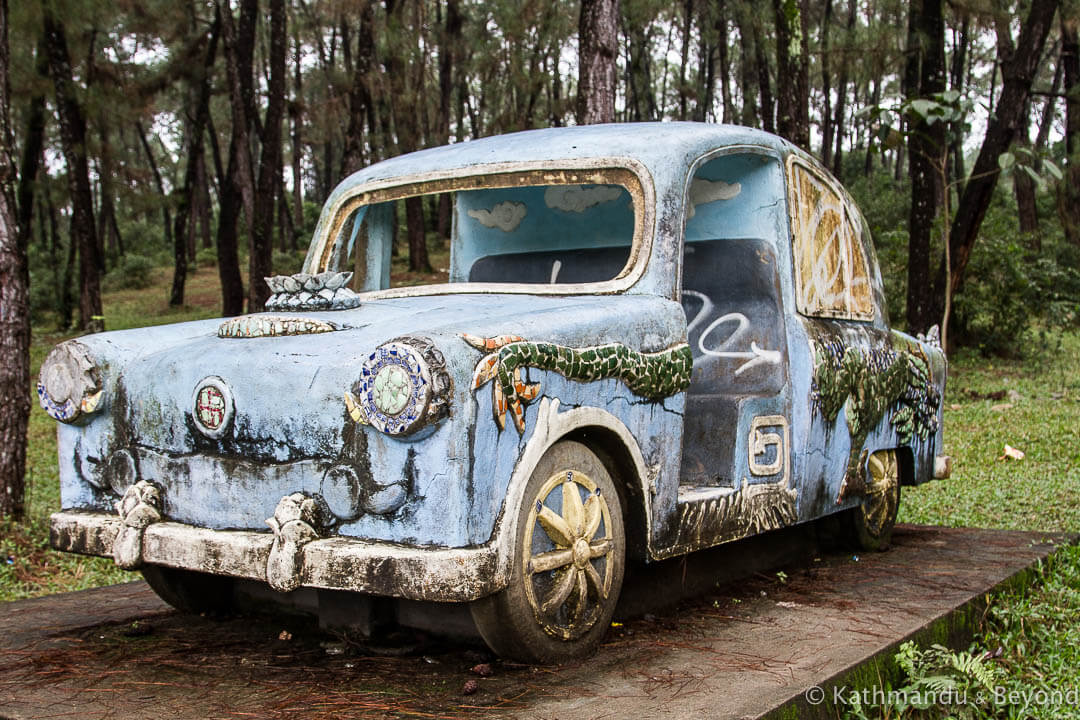
Ho Thuy Tien Water Park
Ho Thuy Tien Water Park is quite close to the Perfume River, so we combined the park with a visit to the Tomb of Tu Duc and Bunker Hill, so-called because it is a forested-hill scattered with bunkers! Most online sources suggest the bunkers date back to the Vietnam War and were put in place by the Americans, but there is also the suggestion that they go back further, to the time of the French. Either way, they are quite interesting and, if you intend to visit the Tomb of Tu Duc, they are nearby and worth the detour.
Assuming you make a reasonably early start, it is also feasible on a bicycle to include a visit to the Tomb of Thieu Tri, Tu Hieu Pagoda and Ho Quyen. We’d seen enough tombs and pagodas and so didn’t bother with any more and besides, the entrance fees soon mount up if you go inside all of them. We did stop at Ho Quyen, however, a kind of mini colosseum dating back to the early 19th century where Vietnamese royalty and the elite would go to watch their favourite pastime: elephants and tigers fighting each other! The entire structure was being renovated at the time of our visit (January 2018) and there was nothing to see except a big pile of bamboo scaffolding.
Annoyingly, Thien Mu Pagoda, which is very close to Ho Quyen, is situated on the north bank of the Perfume River (Ho Quyen and all the attractions mentioned above are on the south side) and to cross the river, you pretty much need to go all the way back to Hue, where the nearest bridge is located, and then double back on yourself in order to reach it.
DID YOU ENJOY THIS POST? HAVE YOU VISITED THE ABANDONED WATER PARK, HUE? PIN IT TO ONE OF YOUR TRAVEL BOARDS…
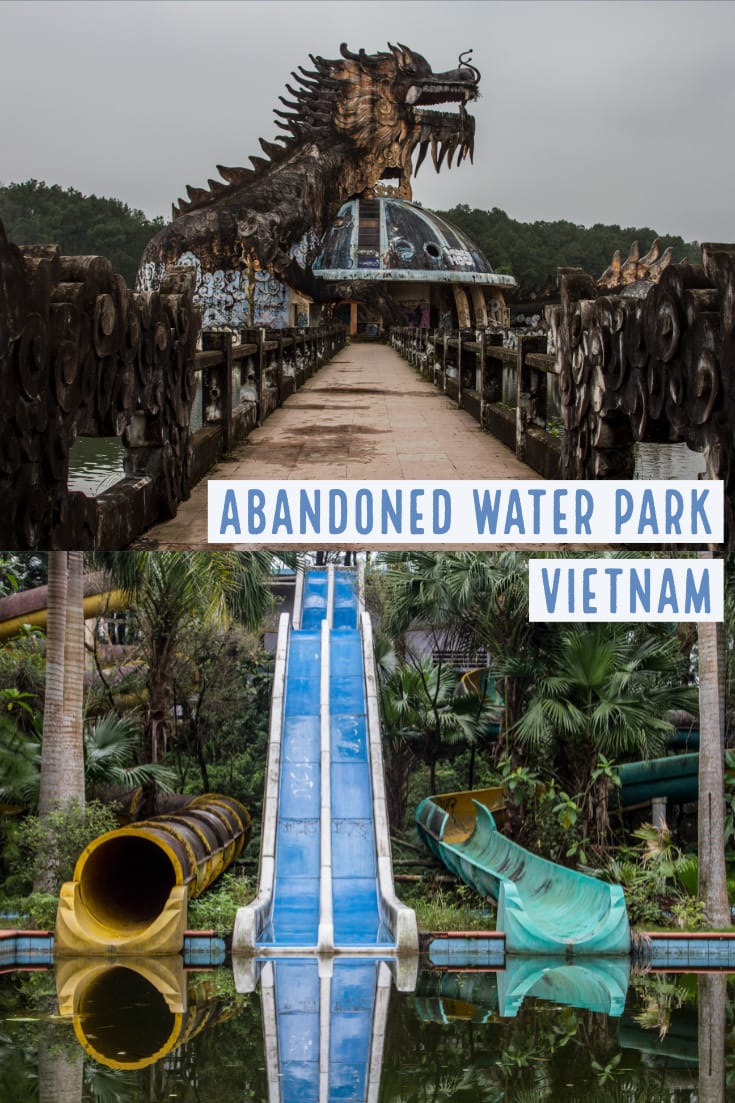
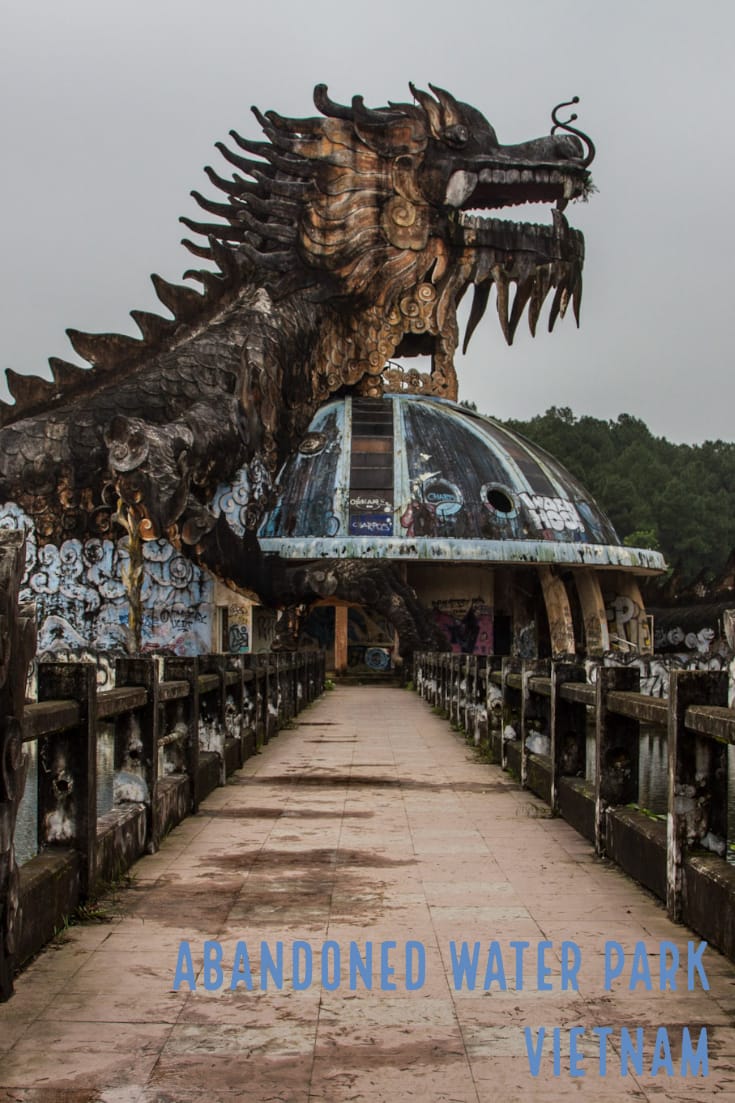
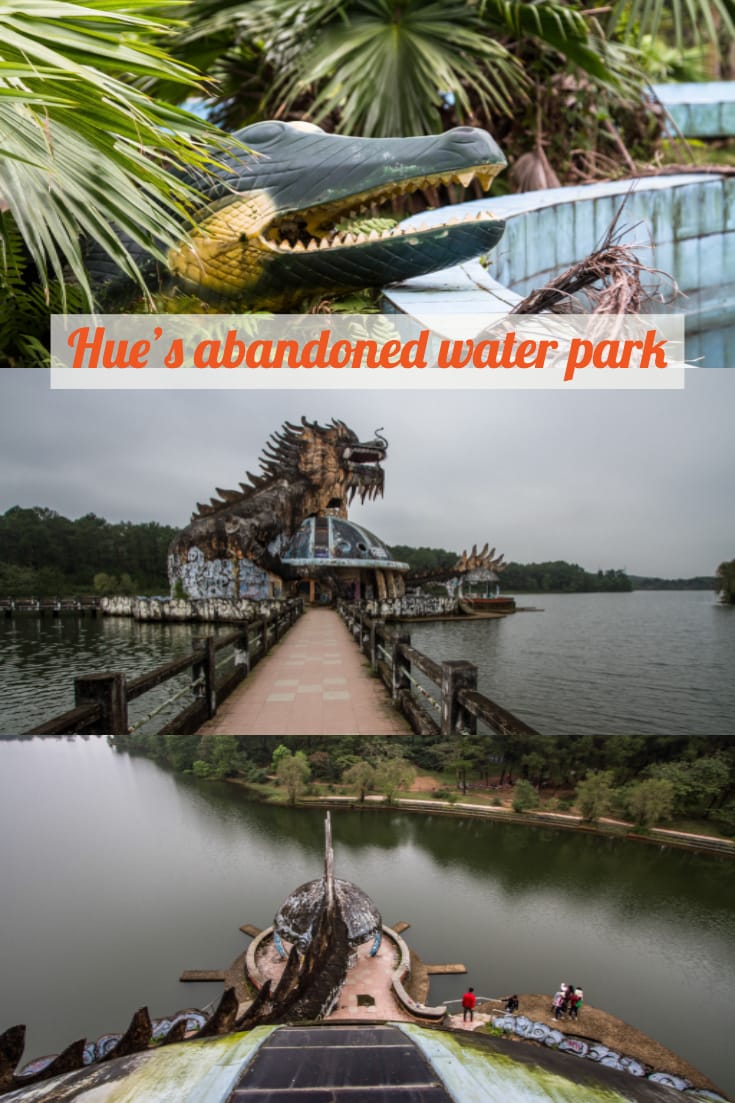

Hue is quite the city Mark. The surrounding burbs/villages are awesome.We taught English to a slew of Vietnamese kids at our hotel in Hue. Then they gave us a personal tour of a Shaolin temple with monks doing flips and stuff., up in the hills. Or something like that. It was nutz!
Sounds like fun Ryan! We did like Hue and enjoyed what the city has to offer but we were put off a little by the constant rain and dampness. Apparently, this is pretty normal and you could tell from the walls of many of the buildings that it rained a lot in Hue. We never really got warm and ended up buying hats and gloves!!